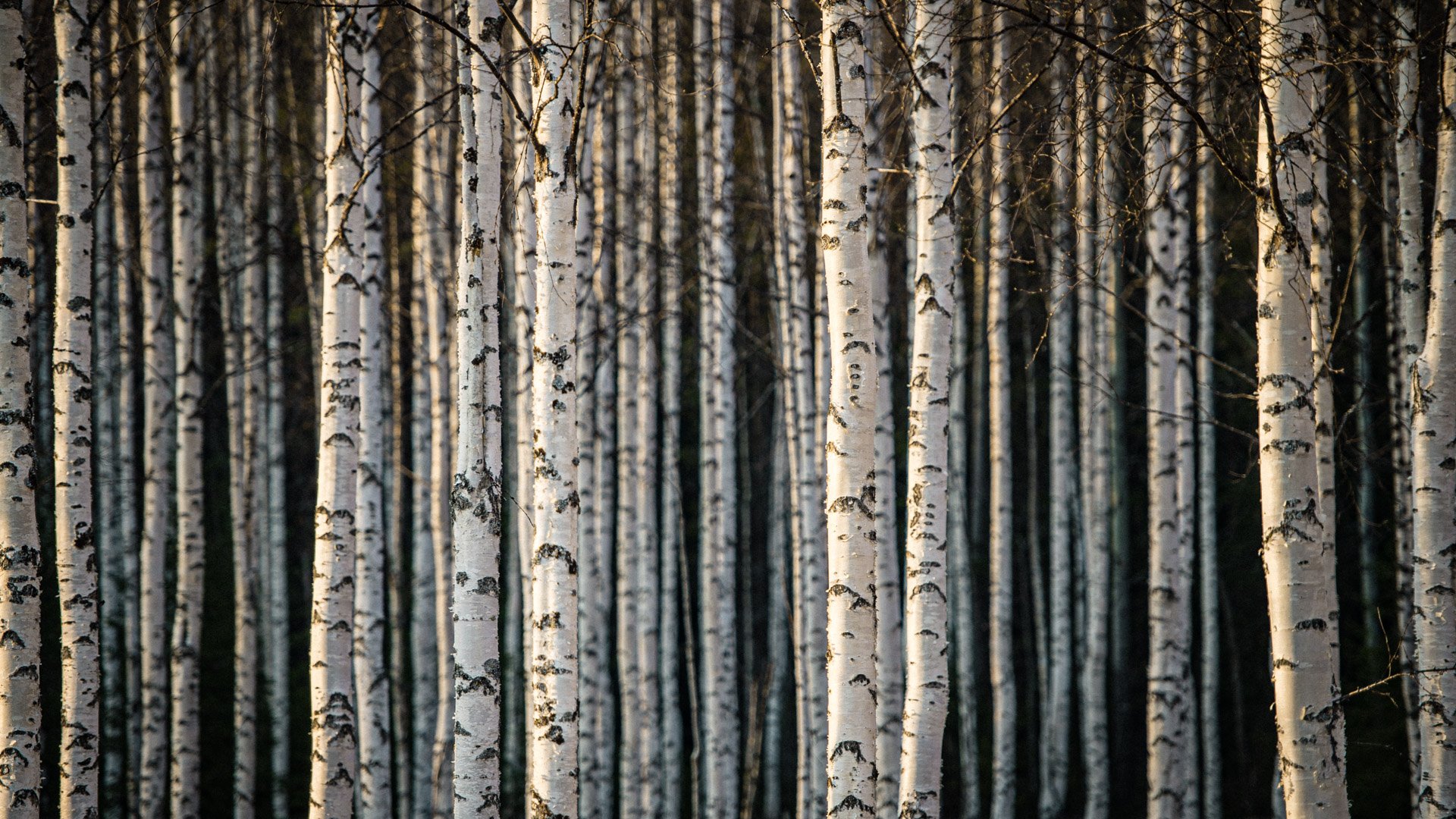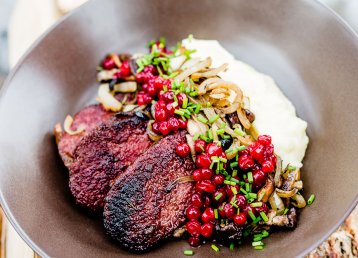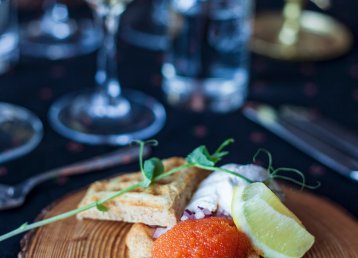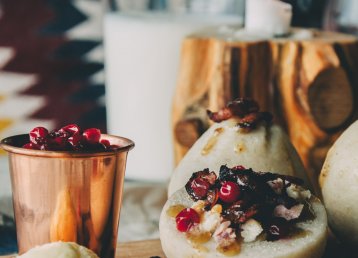In the old days, you could be arrested for loitering. Ambling along in the world without plans was seen as very suspicious behaviour. These days it’s different, and spending a day doing nothing is more a sign of being healthy than anything else. I like those days when I get into my car and just drive. A road trip is something everyone should do at least once. Swedish Lapland is 25% of Sweden’s total surface, so this destination is great for road trips. See how the landscape changes. Meet the changing seasons. Find your inner driver.
On the road
I really like road trips. They make me feel good. Like some wise person once said: “The windshield is large, the rear-view mirror is small”. You’re supposed to look forward to what’s behind the next bend in the road. But to make a road trip a proper road trip, you shouldn’t have a set goal in mind. Going from a to b is to travel. Then you might as well go by plane, bus or train. Driving a car just for the sake of driving means you can think about things you usually wouldn’t.
On the first day, as the day was young, I turned into the E4 near Luleå and went north. Just south of Haparanda I took a right towards Seskarö. Someone has called it the Key West of Swedish Lapland. The road with its many bridges, islands and a view of the sea: it’s pretty. I stopped where the road ended, then took a morning dip. The day was mine anyway, and the sun already warm. At Haparanda Stadshotell they serve a classic ‘dip in a cup’ (“dopp i kopp” in Swedish) for lunch and the evening menu is featuring Kalix vendace roe as a starter looks interesting. Yes, it’s worth stopping.
Music is key
But apart from not having a goal for the road trip, you should, of course, plan all the rest. Music is important. Verdi and Vivaldi are always good for car driving. La donna è mobile is as much summer as it ever was. Every time I listen to it through the speakers, my old Skoda transforms into Inspector Morse’s red Jaguar and the countryside almost always into the welcoming English countryside. Vivaldi has four seasons. There’s always one to match — otherwise La Traviata.
I also listen to AC/DC, Live at River Plate, but an old childhood favourite like Kiss doesn’t work. Neither does Black Sabbath’s first album, even if it’s incomprehensibly good. Peter Lemarc and Bo Kaspers? Yes, always. Also Bruce Springsteen, Merle Haggard and Amos Lee. But if it’s stuff I’ve never listened to before it’s not allowed in the car, because I like singing along. Like when Jason Isbell’s song Travelling Alone hits the speakers. Perhaps that’s why I go on my own. To be able to sing in peace. At least it’s appreciated by others.
Tip!
Listen to Swedish Lapland’s playlists on Spotify here.
From Torne Valley to Kiruna
I always bring mineral water, I’ve also bought dried reindeer meat and coffee cheese, and I’ve always got a pot for making coffee in the back of my car. There’s no way I’m going to get hungry enough to throw myself out of the car to eat a Big Mac or a petrol-station hot dog. No, I’m not a snob. I love potato dumplings as well as bubble and squeak at the hotel in Sorsele. I often stop to have a pizza Siciliana at Afrodite in Arvidsjaur. Capers and sardines, that’s real pizza. But a regular burger with plain dressing and a dry bread roll? That’s where I draw the line.
I drive up North, through the Torne Valley and reach Spis in Kiruna in the afternoon. At Spis, they have a blessed meat cabinet for those who want to feel stuffed. Another thing I’ve always liked about Spis is that hand-welded beer cooler in the corridor of the hotel. There’s basically everything you can imagine in there, from Belgian Saison to Mikkelers IPA.
Also read
The way we eatFrom Kiruna to Gällivare
The next day I take a walk around the city – a city walk in Kiruna is a must. City Move and Ralph Erskine House, Hjalmar Lundbom and a view all the way to Kebnekaise. I have lunch at Malmfälten’s adult education centre. Yes, I know it sounds like a school dining hall, but if you see that many company cars outside a lunch restaurant, you kind of know it’s going to be good. Food worth the money. There’s fried herring and sausage stroganoff on the menu, but they also offer pork with onion sauce as a bonus.
In the afternoon, I drive to Gällivare, to another meat cabinet filled with marbled steaks getting ready. To work up an appetite, I go for a walk there, too, through Kåkstan (shantytown) in Malmberget. Kåkstan was once dissembled because it was a mark of poverty, then it was re-assembled as a cultural monument, and now it’s to be torn down yet again. Malmberget is eaten from within by ever-extending mine shafts. As I stood in the lift up to my room at Grand Hotel Lapland, I felt stuffed. Again. A perfect entrecôte, medium rare, passed through the charcoal grill at Steakhouse that was really tasty in all its simplicity. Well hung, marbled and perfectly tempered on the grill. Also, a good size. Their chef knows how to treat a piece of meat.
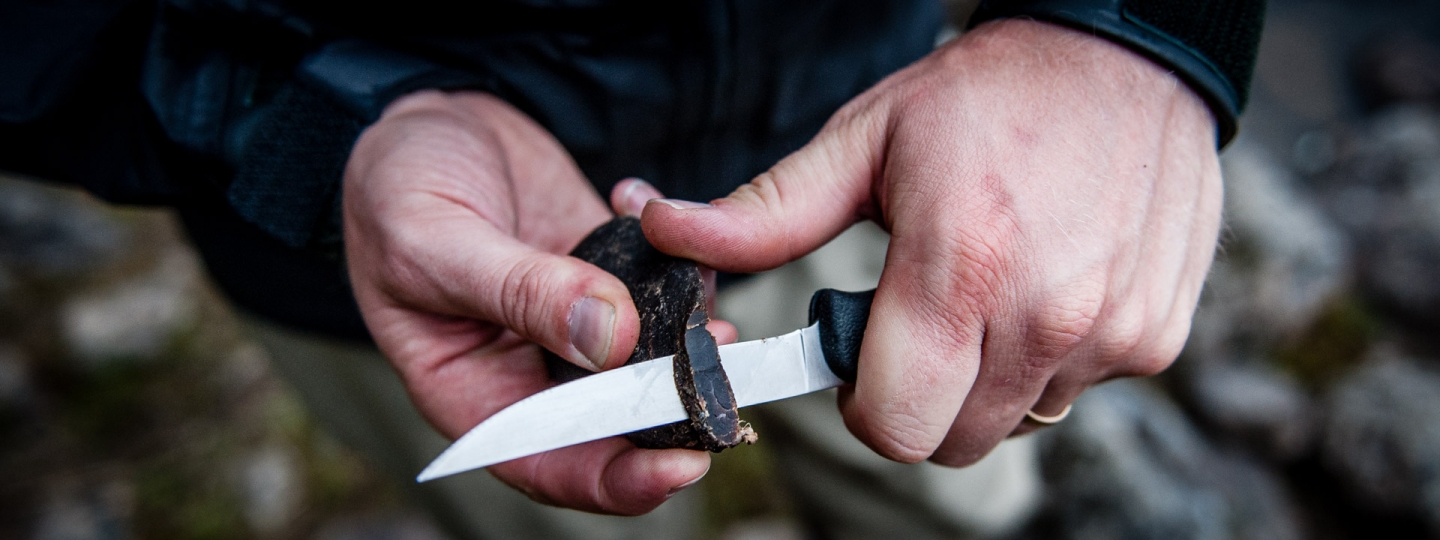
Food for the road
A piece of dried reindeer meat is perfect to bring on the road, in case you're in need of some snacks.
From Gällivare to Jokkmokk
The next morning I take another walk. I cut across the railway crossing behind the railway station towards what in Gällivare is referred to as ‘the other side’, then walk along with the river for some time before heading back to my hotel. Small portions are for non-active people, so to make room for a hearty breakfast, a hearty morning walk is needed.
As I leave Gällivare, I think: “Time to see the mountains”, so I take a right before Porjus and drive along the longest cul-de-sac in Sweden. A pretty Naturum, nature study centre, and a good lunch can indeed be combined. I kind of feel for some gáhkku bread with something nice on top from the café today. Perhaps the mother mountain Áhkká is visible today as well, taking a break next to the road just perfect. That means the coffee pot gets to come out together with the dried reindeer meat and the coffee cheese. The road takes me far into the UNESCO World Heritage Laponia, then it comes to an end, and I drive back.
Terrible food for driving
In the evening I arrive in Jokkmokk. After two days with locally produced beef, I treat myself to reindeer and Arctic char at Ájtte – Swedish Mountain and Sami Museum – instead. Enough with the big steaks. Tomorrow I’m going to explore the museum and the lovely mountain garden in the village. Of course, I’ll be visiting Stoorstålka, Sámi Duodji and Care of Gerd. Jokkmokk takes a day even if you’re on a mission. If you’re lucky it’s a Wednesday and they serve blood potato dumplings at Ájtte. It’s terrible food for driving, but where else can you find proper blood dumplings for lunch?
The next stop
When I’m ready to leave Jokkmokk, it gets trickier. Should I drive to the coast via Kåbdalis and the mighty Storforsen, the largest unregulated rapids in Europe? Or should I drive along the Luleå River via lunch at the Guesthouse at Treehotel, to Boden? I like roaming the area around the Treehotel. Especially the birch forest on the way up to the tree rooms; it has something sacred about it — a cathedral of natural light. But the roaring of Storforsen is also very tempting. Luleå, Piteå and Skellefteå lie by the coast, enough meat cabinets for sure. I know this for a fact. And locally produced beer makes the cities a bit richer in identity. But why worry about it now? Tomorrow as I sit down behind the wheel, as the music finds its way through the speakers and I open up a bottle of Åive mineral water, everything will become clear. Perhaps I’ll end up in Arjeplog? I haven’t been there for a while. Because didn’t someone say that the steak tartare in Vuoggatjålme – made with reindeer topside was “really, really tasty but you have to order it in advance”. So I give them a call, even if I’ve said there shouldn’t be any destinations. But a good steak tartare is worth bending the rules for.
Find the places
Here you’ll find websites to the places Håkan mentions in his story:
Haparanda Stadshotell
Spis
Steakhouse
Ájtte – svenskt fjäll- och samemuseum
Treehotel



























